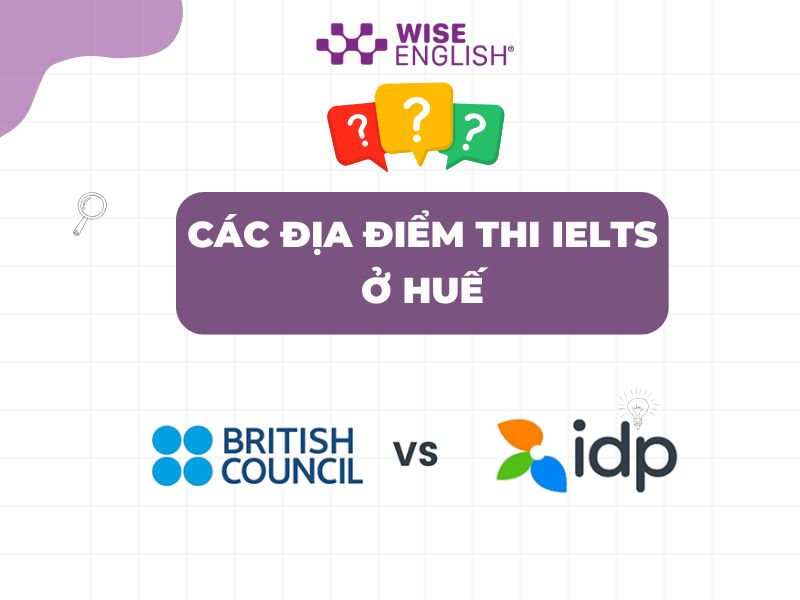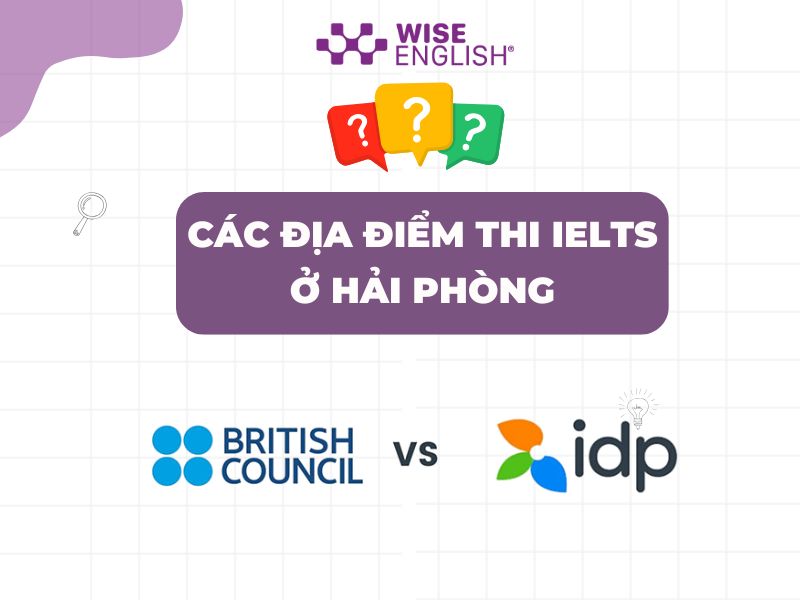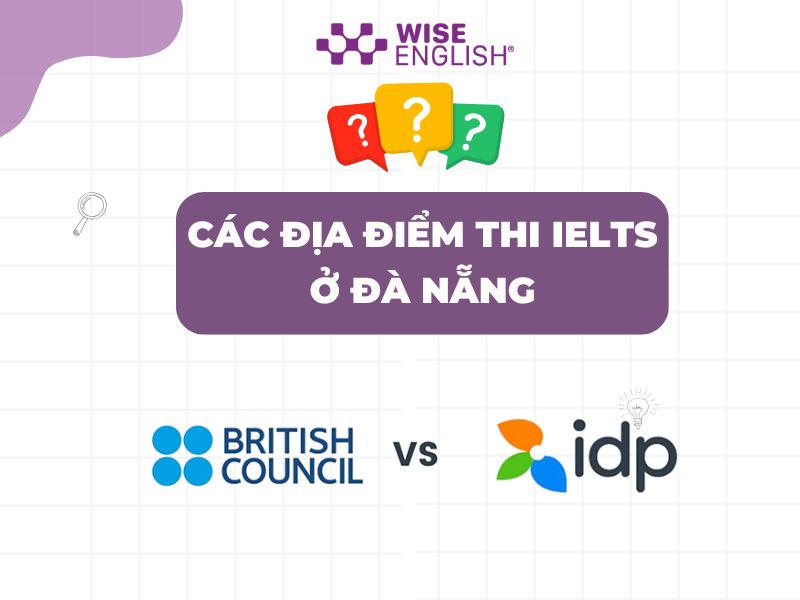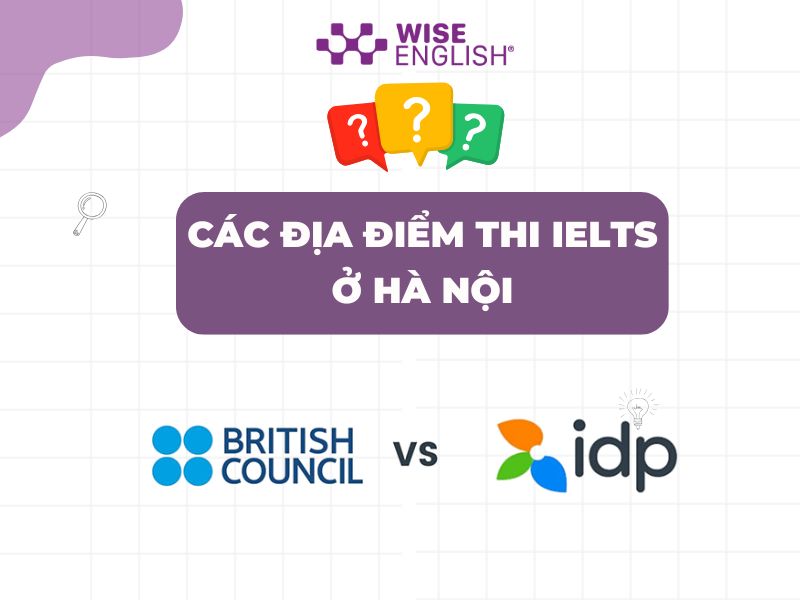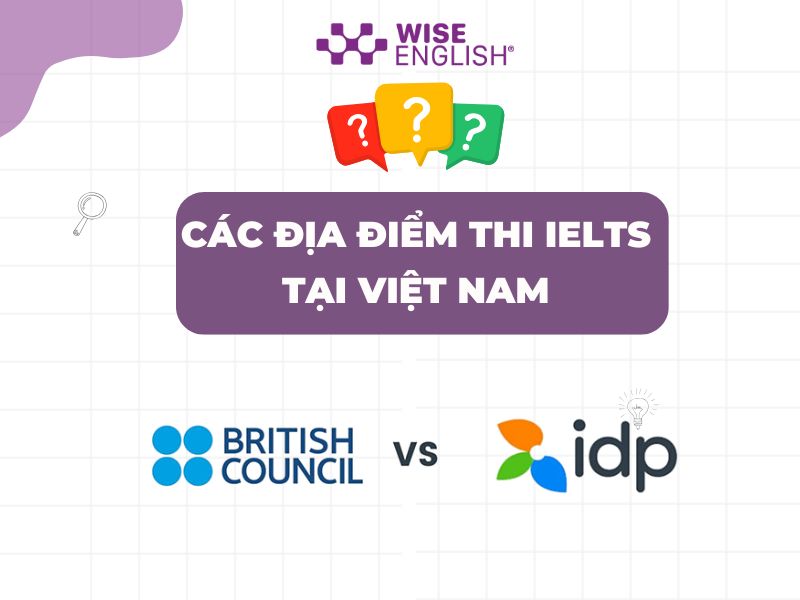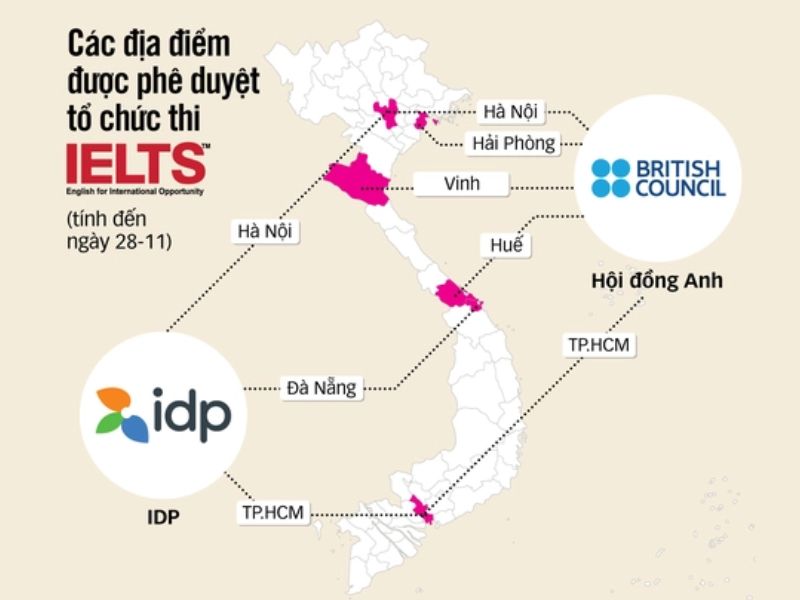IELTS writing task 2 topic Health là chủ đề hot khi mà thế giới vừa trải qua một đợt dịch lớn nhất là Covid 19. Chủ đề nóng hổi này sẽ dễ dàng xuất hiện trong các kỳ thi IELTS thời gian gần đây.
Vậy làm cách nào để có thể ăn điểm với chủ đề này, cùng WISE ENGLISH tìm hiểu qua cách phân tích đề bài và cách viết để ăn điểm tối đa phần thi này nhé.

1. Từ vựng hay về IELTS writing task 2 topic health
WISE ENGLISH đã tổng hợp lại các từ vựng hay về IELTS writing task 2 topic health mà bạn cần nắm. Lưu ngay lại để bổ sung vào vốn từ vựng của mình để dễ dàng vượt qua kỳ thi IELTS này nhé!
Healthcare (n) /ˈhɛlθkeər/ – Chăm sóc sức khỏe
Ví dụ: Governments should invest more in healthcare systems to ensure public well-being.
(Chính phủ nên đầu tư nhiều hơn vào hệ thống chăm sóc sức khỏe để đảm bảo sức khỏe cộng đồng.)
Prevention (n) /prɪˈvɛnʃən/ – Phòng ngừa
Ví dụ: Disease prevention is more cost-effective than treatment.
(Phòng ngừa bệnh tật hiệu quả hơn nhiều so với điều trị.)
Obesity (n) /əʊˈbiːsɪti/ – Béo phì
Ví dụ: Childhood obesity has become a major concern in many developed countries.
(Béo phì ở trẻ em đã trở thành mối quan ngại lớn ở nhiều nước phát triển.)
Sedentary (adj) /ˈsɛdntəri/ – Ít vận động
Ví dụ: A sedentary lifestyle is a significant contributor to heart disease.
(Lối sống ít vận động là một nguyên nhân chính gây bệnh tim.)
Malnutrition (n) /ˌmælnjuˈtrɪʃən/ – Suy dinh dưỡng
Ví dụ: Poor countries often face high rates of malnutrition among children.
(Các nước nghèo thường có tỷ lệ suy dinh dưỡng ở trẻ em cao.)
Immunization (n) /ˌɪmjʊnaɪˈzeɪʃən/ – Tiêm chủng
Ví dụ: Immunization programs have helped eradicate many infectious diseases.
(Các chương trình tiêm chủng đã giúp xóa sổ nhiều bệnh truyền nhiễm.)
Balanced diet (n) /ˈbælənst ˈdaɪət/ – Chế độ ăn cân bằng
Ví dụ: A balanced diet is essential for maintaining good health.
(Chế độ ăn cân bằng rất quan trọng để duy trì sức khỏe tốt.)
Addiction (n) /əˈdɪkʃən/ – Nghiện
Ví dụ: Smoking is a serious addiction that poses numerous health risks.
(Hút thuốc là một dạng nghiện nghiêm trọng gây ra nhiều nguy cơ sức khỏe.)
Mental health (n) /ˈmɛntl hɛlθ/ – Sức khỏe tinh thần
Ví dụ: Employers should provide support for employees’ mental health.
(Các nhà tuyển dụng nên hỗ trợ cho sức khỏe tinh thần của nhân viên.)
Chronic disease (n) /ˈkrɒnɪk dɪˈziːz/ – Bệnh mãn tính
Ví dụ: Diabetes is one of the most common chronic diseases worldwide.
(Bệnh tiểu đường là một trong những bệnh mãn tính phổ biến nhất trên toàn thế giới.)
Health awareness (n) /hɛlθ əˈwɛənəs/ – Nhận thức về sức khỏe
Ví dụ: Campaigns to increase health awareness can reduce the incidence of preventable diseases.
(Các chiến dịch nâng cao nhận thức về sức khỏe có thể giảm tỷ lệ các bệnh có thể phòng ngừa.)
Lifestyle choices (n) /ˈlaɪfstaɪl ˈʧɔɪsɪz/ – Lựa chọn lối sống
Ví dụ: Poor lifestyle choices, such as smoking or unhealthy eating, lead to severe health problems.
(Những lựa chọn lối sống kém như hút thuốc hoặc ăn uống không lành mạnh dẫn đến các vấn đề sức khỏe nghiêm trọng.)
Healthcare facilities (n) /ˈhɛlθkeər fəˈsɪlɪtiz/ – Cơ sở y tế
Ví dụ: Rural areas often lack adequate healthcare facilities.
(Khu vực nông thôn thường thiếu các cơ sở y tế phù hợp.)
Treatment (n) /ˈtriːtmənt/ – Điều trị
Ví dụ: Early detection and treatment can save lives.
(Phát hiện và điều trị sớm có thể cứu sống nhiều người.)
Hygiene (n) /ˈhaɪdʒiːn/ – Vệ sinh
Ví dụ: Good personal hygiene helps prevent the spread of diseases.
(Vệ sinh cá nhân tốt giúp ngăn ngừa sự lây lan của bệnh tật.)
Physical activity (n) /ˈfɪzɪkəl ækˈtɪvɪti/ – Hoạt động thể chất
Ví dụ: Regular physical activity can reduce the risk of chronic diseases.
(Hoạt động thể chất thường xuyên có thể giảm nguy cơ mắc bệnh mãn tính.)
Health insurance (n) /hɛlθ ɪnˈʃʊərəns/ – Bảo hiểm y tế
Ví dụ: Many people cannot afford healthcare without health insurance.
(Nhiều người không thể chi trả chăm sóc sức khỏe nếu không có bảo hiểm y tế.)
Life expectancy (n) /laɪf ɪkˈspɛktənsi/ – Tuổi thọ
Ví dụ: Advances in medicine have increased life expectancy in most countries.
(Sự tiến bộ trong y học đã nâng cao tuổi thọ ở hầu hết các quốc gia.)
Public health (n) /ˈpʌblɪk hɛlθ/ – Sức khỏe cộng đồng
Ví dụ: Vaccination campaigns play a crucial role in improving public health.
(Các chiến dịch tiêm chủng đóng vai trò quan trọng trong việc cải thiện sức khỏe cộng đồng.)
Nutrition (n) /njuːˈtrɪʃən/ – Dinh dưỡng
Ví dụ: Proper nutrition is essential for children’s physical and mental development.
(Dinh dưỡng đúng cách rất quan trọng cho sự phát triển thể chất và tinh thần của trẻ em.)
Trên đây là WISE đã tổng hợp 1 số từ vựng thường gặp trong IELTS writing task 2 topic Health mà bạn cần nắm. Nắm vững từ vựng có thể giúp bạn triển khai ý tưởng của mình một cách tốt nhất cho bài thi sắp tới. Nếu bạn cảm thấy ôn luyện không hiệu quả, bạn có thể tham khảo khóa học IELTS 1 kèm 1 của WISE English với đội ngũ giáo viên 8.0+ luôn support nhiệt tình khi bạn có thắc mắc
Nếu bạn cảm thấy tự học và ôn luyện IELTS tại nhà không hiệu quả, WISE đã tổng hợp lại các trung tâm ôn luyện thi IELTS TPHCM tốt nhất hiện nay để bạn có thể chuẩn bị trước cho kỳ thi chính thức tốt nhất
2. Bài mẫu về IELTS writing task 2 topic health
Dưới đây là một số bài viết mẫu có từ vựng hay được sử dụng và phân tích đề bài IELTS Writing task 2 topic health mà bạn có thể tham khảo. Cùng xem qua nhé.
| Some people say that the governments should pay for health care and education but others think that this is not the government’s responsibility. Discuss both these views and give your opinion. |
Phân tích đề bài:
Introduction:
Body Paragraph 1: Advantages:
Ví dụ: Hệ thống y tế công cộng ở các nước phát triển như Anh. Body Paragraph 2: Disadvantages:
Ví dụ: Các dịch vụ y tế và giáo dục tư nhân thường hiệu quả hơn. Opinion
Conclusion:
|
Bài mẫu trả lời:
| Introduction:
Health care and education are two essential pillars of any society, often sparking debates over who should bear their costs. While some argue that governments should fully fund these sectors, others contend that individuals must take responsibility. This essay will discuss both perspectives before presenting my opinion on the matter. Body Paragraph 1: Proponents of government-funded health care and education believe that these are fundamental human rights. By providing free access to these services, governments can ensure social equality, allowing even the most disadvantaged groups to receive proper care and education. For instance, the National Health Service (NHS) in the United Kingdom offers free medical treatment to all citizens, significantly improving public health outcomes. Moreover, investing in education fosters a skilled workforce, which benefits the nation’s economy in the long run. Body Paragraph 2: Conversely, critics argue that funding these services through taxes places an excessive financial burden on citizens. High taxation can discourage economic growth and reduce disposable income for taxpayers. Additionally, privatized systems often deliver higher-quality services due to competition and efficiency. For example, private schools and hospitals frequently outperform their public counterparts in terms of facilities and outcomes. Encouraging individuals to take financial responsibility can also foster a sense of accountability and reduce reliance on government resources. Opinion In my opinion, a balanced approach is the most practical solution. Governments should provide basic health care and education to ensure accessibility for all, particularly vulnerable populations. At the same time, individuals who can afford advanced or specialized services should contribute financially. For instance, a hybrid system where public services cater to essential needs and private institutions offer premium options could alleviate the strain on public funds while maintaining quality. Conclusion: In conclusion, while government-funded health care and education are crucial for promoting equality, individual contributions are equally important for sustainability. A mixed system that combines public and private funding would effectively address the needs of society while ensuring efficiency and fairness. |
Từ vựng hay được sử dụng trong bài viết:
Healthcare (/ˈhɛlθkeər/): chăm sóc sức khỏe.
Ví dụ: Universal healthcare ensures equal access for all citizens.
Education system (/ˌɛdjuˈkeɪʃən ˈsɪstəm/): hệ thống giáo dục.
Ví dụ: A strong education system is vital for economic development.
Public funding (/ˈpʌblɪk ˈfʌndɪŋ/): ngân sách công.
Ví dụ: Public funding is necessary to maintain affordable healthcare services.
Taxpayer (/ˈtæksˌpeɪər/): người đóng thuế.
Ví dụ: Many taxpayers oppose increasing taxes for healthcare subsidies.
Social welfare (/ˈsəʊʃl ˈwɛlfeər/): phúc lợi xã hội.
Ví dụ: Governments should prioritize social welfare programs.
Subsidize (/ˈsʌbsɪdaɪz/): trợ cấp.
Ví dụ: Governments often subsidize healthcare for low-income families.
Privatization (/ˌpraɪvətaɪˈzeɪʃən/): tư nhân hóa.
Ví dụ: Privatization of education can lead to improved efficiency.
Bạn cũng có thể xem thêm các chủ đề liên quan trong phần IELTS Writing:
- [Cập nhật] Bộ 30 chủ đề IELTS Writing phổ biến nhất năm 2024
- [IDEA] IELTS Writing topic Art Task 2: ý tưởng và bài mẫu thú vị
- Bài mẫu IELTS Writing topic Food task 2 chi tiết
- Bài mẫu IELTS Writing topic Family task 2 đầy đủ nhất
- IELTS Writing topic Environment task 2 đầy đủ nhất [TỪ VỰNG VÀ BÀI MẪU]
- Bài mẫu IELTS writing task 2 business and money đầy đủ nhất
- Bài mẫu IELTS writing global warming kèm Vocab đầy đủ
- Bài mẫu IELTS Writing topic Crime and punishment task 2 chi tiết nhất
- Bài mẫu IELTS Writing task 2 topic education chi tiết nhất
| A healthy person is often described as someone who has a good diet, gets lots of exercises and avoids stress. What should people do to stay fit? Give reasons for your answer. |

Phân tích đề bài:
|
Introduction:
Body Paragraph 1: Tầm quan trọng của chế độ ăn uốn
Body Paragraph 2: Lợi ích của tập thể dục
Body Paragraph 3: Tránh căng thẳng để cải thiện tinh thần
Conclusion:
|
Bài mẫu trả lời:
| Introduction:
Maintaining good health is a priority for many individuals, yet it often requires deliberate effort and consistent habits. A healthy person is frequently described as someone who follows a balanced diet, exercises regularly, and manages stress effectively. In this essay, I will outline the key practices people should adopt to stay fit, supported by logical reasoning and real-life examples. Body Paragraph 1: One of the foundational pillars of good health is a nutritious diet. A balanced diet provides the body with essential nutrients needed for optimal functioning. Consuming a variety of fruits, vegetables, whole grains, and lean proteins is crucial for maintaining energy levels and strengthening the immune system. On the other hand, frequent consumption of processed foods and sugary snacks can lead to obesity and chronic illnesses. For example, individuals who prioritize home-cooked meals rich in vegetables and lean meat tend to have better overall health than those who rely on fast food. Body Paragraph 2: Regular physical activity is equally important for staying fit. Exercise not only improves cardiovascular health but also enhances muscle strength and flexibility. Engaging in at least 30 minutes of moderate exercise daily, such as jogging, swimming, or yoga, can significantly reduce the risk of diseases like diabetes and heart disease. For instance, studies have shown that individuals who incorporate regular workouts into their routines are less likely to suffer from lifestyle-related illnesses. Furthermore, exercise promotes the release of endorphins, which elevate mood and reduce stress levels. Body Paragraph 3: Stress management is another vital aspect of maintaining health. Chronic stress can lead to severe physical and mental health issues, including high blood pressure and depression. To alleviate stress, individuals can adopt relaxation techniques such as meditation, deep breathing, or engaging in hobbies. Spending quality time with loved ones also plays a significant role in reducing stress. For example, many people who practice mindfulness report improved focus and a more positive outlook on life. By managing stress effectively, individuals can safeguard both their mental and physical well-being. Conclusion: In conclusion, staying fit requires a holistic approach that encompasses a balanced diet, regular exercise, and stress management. These practices, when combined, create a strong foundation for long-term health and vitality. While achieving and maintaining such habits may require discipline, the rewards of a healthier and happier life make the effort worthwhile. |
Từ vựng hay được sử dụng trong bài viết:
Healthy lifestyle (/ˈhɛlθi ˈlaɪfstaɪl/): lối sống lành mạnh.
Ví dụ: A healthy lifestyle includes balanced nutrition and regular exercise.
Balanced diet (/ˈbælənst ˈdaɪət/): chế độ ăn cân bằng.
Ví dụ: A balanced diet provides essential vitamins and minerals.
Cardiovascular health (/ˌkɑːdɪəʊˈvæskjʊlər hɛlθ/): sức khỏe tim mạch.
Ví dụ: Running regularly improves cardiovascular health.
Processed food (/ˈprəʊsɛst fuːd/): thực phẩm chế biến sẵn.
Ví dụ: Avoiding processed food can reduce the risk of obesity.
Mental well-being (/ˈmɛntl ˌwɛlˈbiːɪŋ/): sức khỏe tinh thần.
Ví dụ: Meditation enhances mental well-being.
Physical fitness (/ˈfɪzɪkl ˈfɪtnəs/): thể chất khỏe mạnh.
Ví dụ: Daily workouts contribute to physical fitness.
Stress management (/strɛs ˈmænɪʤmənt/): quản lý căng thẳng.
Ví dụ: Practicing yoga helps in stress management.
Immune system (/ɪˈmjuːn ˈsɪstəm/): hệ miễn dịch.
Ví dụ: A diet rich in vitamin C boosts the immune system.
Bạn đang cần bằng IELTS gấp để chuẩn bị cho hành trang tương lai sắp tới, bạn có thể tham khảo ngay khóa luyện thi IELTS cấp tốc của WISE ENGLISH với lộ trình học cấp tốc và tinh gọn phù hợp với người có nền tảng cơ bản
| Shops should not be allowed to sell any food or drink that has been scientifically proved to be bad for people’s health. To what extent do you agree or disagree? |
Phân tích đề bài:
|
Introduction:
Body Paragraph 1:
Ví dụ: Cấm đồ uống có đường ở một số quốc gia đã giúp giảm tỷ lệ béo phì ở trẻ em. Body Paragraph 2:
Ví dụ: Trong lịch sử, việc cấm rượu ở Mỹ (Prohibition Era) dẫn đến gia tăng tội phạm và buôn lậu. Body Paragraph 3:
Conclusion:
|
Bài mẫu trả lời:
| Introduction:
The consumption of unhealthy food and drink has been scientifically linked to numerous health problems, such as obesity and heart disease. Consequently, some argue that shops should be prohibited from selling such products. While I acknowledge the potential benefits of this proposal, I believe that a complete ban is neither practical nor effective, and alternative measures should be considered. Body Paragraph 1: Advocates of a ban on unhealthy food and drink highlight its significant impact on public health. Many of these products are high in sugar, fat, and additives, contributing to chronic illnesses such as diabetes and cardiovascular diseases. If governments restrict their availability, people may be encouraged to adopt healthier eating habits, thereby reducing the strain on healthcare systems. For instance, a sugar tax implemented in the UK has led to a decline in the consumption of sugary beverages, showcasing the effectiveness of such measures in promoting better health outcomes. Body Paragraph 2: However, banning these products entirely could lead to unintended consequences. Such policies might give rise to black markets, where these items are sold illegally, as seen during the Prohibition Era in the United States. Additionally, individuals should have the freedom of choice regarding their diet. Imposing a complete ban may be perceived as paternalistic and infringing upon personal liberties. For example, while smoking is widely acknowledged as harmful, governments do not entirely prohibit tobacco products but instead regulate their sale and educate the public about the risks. Body Paragraph 3: Rather than a complete ban, governments should prioritize raising awareness and implementing economic measures to discourage consumption. Educational campaigns about the dangers of unhealthy food and the benefits of a balanced diet can empower individuals to make informed decisions. Furthermore, imposing higher taxes on unhealthy products and subsidizing healthier alternatives would make nutritious food more accessible. For instance, countries like Denmark and Mexico have successfully reduced junk food consumption through such policies. Conclusion: In conclusion, while restricting the sale of scientifically proven harmful food and drink could improve public health, a complete ban may lead to unintended issues and undermine individual freedoms. A more effective approach would involve a combination of public education, economic incentives, and regulations to encourage healthier dietary habits. By addressing the root causes of unhealthy consumption, governments can achieve a sustainable improvement in public health. |
Từ vựng hay được sử dụng trong bài viết:
Unhealthy food (/ʌnˈhɛlθi fuːd/): Thực phẩm không lành mạnh.
Ví dụ: Consumption of unhealthy food leads to obesity.
Chronic diseases (/ˈkrɒnɪk dɪˈziːzɪz/): Bệnh mãn tính.
Ví dụ: Junk food contributes to chronic diseases like diabetes.
Public health (/ˈpʌblɪk hɛlθ/): Sức khỏe cộng đồng.
Ví dụ: Governments should prioritize public health policies.
Health-conscious (/hɛlθ ˈkɒnʃəs/): Quan tâm đến sức khỏe.
Ví dụ: People are becoming more health-conscious due to media campaigns.
Nutritional education (/njuːˈtrɪʃənl ˌɛdjʊˈkeɪʃən/): Giáo dục dinh dưỡng.
Ví dụ: Schools should focus on nutritional education to promote healthy eating.
Regulation (/ˌrɛgjʊˈleɪʃən/): Quy định.
Ví dụ: Strict regulations on advertising unhealthy food are necessary.
Processed food (/ˈprəʊsɛst fuːd/): Thực phẩm chế biến sẵn.
Ví dụ: Processed food often contains harmful additives.
Black market (/blæk ˈmɑːkɪt/): Thị trường chợ đen.
Ví dụ: A ban on certain products can lead to a rise in the black market.
Preventive measures (/prɪˈvɛntɪv ˈmɛʒəz/): Biện pháp phòng ngừa.
Ví dụ: Increasing taxes on sugary drinks is a preventive measure.
Freedom of choice (/ˈfriːdəm ɒv ʧɔɪs/): Quyền tự do lựa chọn.
Ví dụ: People should have the freedom of choice regarding their diet.
Bạn đang có ý định đi du học định cư, bạn có thể tìm hiểu thêm về IELTS generral training dành cho các bạn du học sinh định cư.
| The charts below show the average consumption of three nutrients by adults in the UK. All of these nutrients may be unhealthy if eaten too much. Summarise the information by selecting and reporting the main features and make comparisons where relevant. Write at least 150 words. |

Phân tích đề bài:
|
Introduction:
Overview
Body Paragraph 1:
Body Paragraph 2:
|
Bài mẫu trả lời:
| Introduction:
The charts illustrate the average consumption of three nutrients—sodium, saturated fat, and added sugar—by adults in the UK during four meals: breakfast, lunch, dinner, and snacks. These nutrients, while essential in moderation, may pose health risks if consumed excessively. Overall, dinner accounts for the highest proportion of sodium and saturated fat intake, while snacks are the primary source of added sugar. Breakfast has the lowest levels of all three nutrients, indicating it is the healthiest meal of the day. Body Paragraph 1: In terms of sodium, dinner makes up the largest proportion at 43%, followed by lunch at 29%. Breakfast and snacks contribute significantly less, with 14% and 14%, respectively. A similar pattern is observed for saturated fat, with dinner leading at 37% and lunch accounting for 26%. Snacks represent 21%, whereas breakfast contains the lowest proportion at 16%. Body Paragraph 2: Added sugar, however, demonstrates a different distribution. Snacks are the dominant source, contributing 42% of the total intake, while dinner accounts for 23%. Lunch and breakfast collectively make up a smaller share, at 19% and 16%, respectively. This indicates that sugary snacks are a major contributor to excessive sugar consumption. Conclusion: In conclusion, the data highlights that dinner is the primary contributor to sodium and saturated fat intake, while snacks are the leading source of added sugar. To promote better health, reducing the consumption of unhealthy snacks and high-fat dinners could be a practical approach. |
Từ vựng hay được sử dụng trong bài viết:
Nutrient (/ˈnjuː.tri.ənt/): Chất dinh dưỡng.
Ví dụ: Salt is an essential nutrient, but excessive consumption can harm health.
Consumption (/kənˈsʌmp.ʃən/): Sự tiêu thụ.
Ví dụ: The average consumption of sugar is higher during dinner.
Excessive (/ɪkˈses.ɪv/): Quá mức.
Ví dụ: Excessive intake of saturated fat can lead to obesity.
Sodium (/ˈsəʊ.di.əm/): Natri (muối).
Ví dụ: High levels of sodium in snacks can increase blood pressure.
Saturated fat (/ˈsætʃ.ər.eɪ.tɪd fæt/): Chất béo bão hòa.
Ví dụ: Processed foods often contain high amounts of saturated fat.
Added sugar (/ˈæd.ɪd ˈʃʊɡ.ər/): Đường bổ sung.
Ví dụ: Soft drinks are a significant source of added sugar.
Meal composition (/miːl ˌkɒm.pəˈzɪʃ.ən/): Thành phần bữa ăn.
Ví dụ: Breakfast has a lower meal composition of unhealthy nutrients.
Proportion (/prəˈpɔːʃ.ən/): Tỷ lệ.
Ví dụ: The proportion of sugar consumption is higher in snacks.
Health implications (/hɛlθ ˌɪmplɪˈkeɪʃənz/): Hệ quả về sức khỏe.
Ví dụ: Overeating sugar can have severe health implications.
Caloric intake (/kəˈlɒr.ɪk ˈɪn.teɪk/): Lượng calo hấp thụ.
Ví dụ: Dinner tends to have the highest caloric intake.
Trên đây là 4 bài mẫu đi kèm từ vựng IELTS chủ đề government cho bạn có thể tham khảo cách giải quyết vấn đề cho từng loại đề.
📌 Tải ngay Tổng hợp đề thi IELTS Writing 2024 kèm theo lời giải chi tiết đề cập nhật xu hướng đề thi mới nhất
3. Tổng kết
IELTS Writing task 2 Topic health là một chủ đề “khó xơi” trong kỳ thi IELTS. Tuy nhiên, nó sẽ không quá khó khăn nếu bạn cố gắng bổ sung vốn từ vựng và rèn luyện tư duy ngay từ bây giờ. Hy vọng qua bài viết này, WISE English đã cung cấp cho bạn thông tin hữu ích để có thể áp dụng vào bài ôn thi của mình. Chúc bạn có một kỳ thi thật tốt và đạt được kết kết quả như mong muốn.
📌 Bạn muốn tham khảo phương pháp luyện thi IELTS độc đáo và hiệu quả tại WISE English? Tham khảo ngay Trung tâm Luyện thi IELTS uy tín và hiệu quả
Để giúp bạn ôn luyện hiệu quả cho kỳ thi, WISE ENGLISH cung cấp nguồn tài liệu IELTS luyện thi hữu ích bao gồm các Hội thảo sự kiện IELTS, Khóa học luyện thi được gợi ý dựa trên nhu cầu và trình độ của mỗi cá nhân.
Đừng quên follow ngay Fanpage, Group cộng đồng nâng band thần tốc và kênh Youtube WISE ENGLISH để học thêm nhiều bí kíp giúp bạn NÂNG BAND THẦN TỐC và chinh phục các nấc thang của IELTS bằng Phương Pháp Học Vượt Trội và Lộ Trình Cá Nhân Hóa nhé.
Các chủ đề liên quan mà bạn có thể quan tâm:
- Chi tiết cấu trúc đề thi IELTS 2024 và dạng câu hỏi mà bạn cần biết
- Top 6 website cung cấp đề thi thử IELTS Online miễn phí 2024
- Tổng hợp đề thi IELTS cập nhật mới nhất
BẠN CÒN BĂN KHOĂN VỀ NỘI DUNG NÀY?
Bạn có thể liên hệ với WISE ENGLISH về nội dung này để nhận giải đáp của các giáo viên band 8.0+





